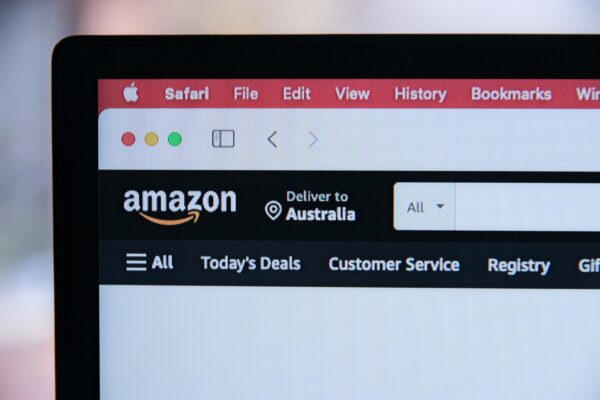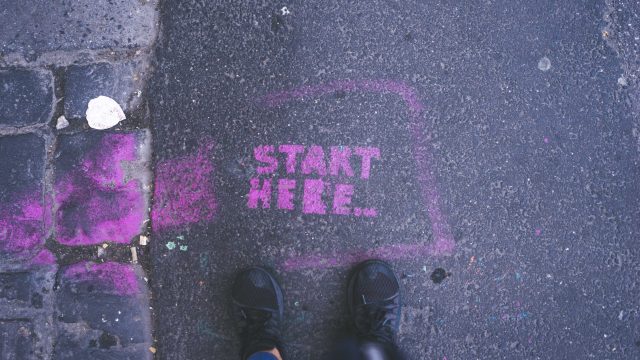Often seen as just a race to the bottom, price tanking is unfortunately something that most Amazon arbitrageurs deal with at some point in their lives. Price tanking is where a particular seller decides to significantly lower their price, leading to other sellers either not being able to shift stock or continually undercutting each other until they are selling at a loss. Competitive pricing is healthy, but unchecked price wars are bad for all sellers.

In this article we’re going to teach you exactly how to identify a price tanking situation, how to avoid getting into one to begin with and if you are in one, how to react.
What does “price tanking” mean?
Price tanking is where there is a rapid decrease in the selling price of a product on Amazon. This is often as a result of multiple sellers competing for the buy box, or trying to liquidate excess inventory quickly. Unfortunately, the use of repricing tools often makes this worse as sellers using repricers who haven’t specified a minimum price threshold end up having their repricers compete with each other in a race to the bottom.
It’s also not uncommon for Amazon themselves to drastically drop the price of a product that they are selling – and when this happens it can be the case that the buy box actually gets removed as third party sellers are selling for much more than the item’s average sold price.
Price tanking can also be used maliciously by larger sellers trying to drive smaller sellers out of the market – if they have deep pockets, they can afford to take the loss, where smaller sellers who don’t have as much capital are driven out of business. Additionally, price tanking can be used as a way of manipulating stock levels – a seller with stock on order but minimal stock on-hand can tank prices, leading everyone else to stock out and for them to sell their next stock replenishment at a higher profit margin.
Why is price tanking a problem for Amazon arbitrageurs?
Obviously price tanking can be pretty disastrous for you as an online arbitrageur, as a product that previously would have been quite profitable for you is now either unsellable until the price comes back up, or even worse, is costing you money in FBA storage fees.
The challenge of having to hold off on selling inventory while you’re still having to pay for it to be stored at an FBA facility is probably the most serious consequence of price tanking for online arbitrageurs, as once you’ve shipped something to Amazon, that’s it – you can’t have it back (without paying quite significant shipping fees) and you’re committed to paying for the storage until the items sell. One way to avoid this is to ensure that you plan properly for storage fees – don’t just assume your items are going to sell the moment they are booked into an Amazon FC.
Additionally, price tanking can cause issues with your cashflow – you might have capital tied up in stock that you need to liquidate in order to move onto your next arbitrage deal, and a tanked price meaning you can’t sell at the margin you want to prohibits you from taking advantage of other arbitrage opportunities. You’re also having to spend a lot of your time monitoring prices to see whether they’ve normalised and you can start selling profitably again – and this is time you should be spending looking for arbitrage opportunities using a tool like SourceMogul.
SourceMogul is a game-changer for online arbitrageurs, as it scans hundreds of retailers for thousands of products to identify the best, most profitable Amazon arbitrage opportunities, allowing you to stay one step ahead of the competition. We’re offering a free 7 day trial of SourceMogul if you click the link below and sign up.
How to avoid a price tanking situation
Everyone who sells on Amazon is going to experience this sooner or later, and you need to be ready for it. That’s not to say that it’s the end of the world when the price does tank on an item you’ve bought, but it is a learning opportunity and you should treat it as such if you want to become a better arbitrageur.
Often the situation was avoidable and may just be that you’ve made a bad buy – and this is usually as a result of relying too much on the product’s sales rank. Just because an item has sold for a higher price at some point doesn’t mean that’s your margin – if a product is selling mostly at a lower price, and you just happen to see the higher price when you do your research, you’re going to end up buying a product you can’t make money on.
That being said, there are ways you can mitigate your exposure to price tanking. This doesn’t, however, apply if someone is tanking prices maliciously – there’s no way around this other than to just wait it out – the price usually will eventually normalize.
Diversify your inventory
Don’t just try to sell one product or type of product – as if the price tanks, all your capital is tied up in this one product and you have to wait for the price to normalize before you can sell anything. If your inventory is diversified, your risk is spread across multiple products and your susceptibility to price tanking is greatly reduced.
Limit your initial quantities
This is specifically for online arbitrage, where if you’re testing out a new product, don’t buy hundreds and hundreds of them if you’ve not tested them in the market and aren’t sure you can make a profit. On paper, your item may look profitable, but it’s a tale as old as time where an arbitrageur gets their items shipped to Amazon, starts selling, and straight away the price tanks below their break even point and they have capital tied up in those products and are accruing FBA fees.
If this does happen to you (and it happens to the best arbitrageurs out there) then you’ll feel much better if you only have 12 items sat in an Amazon FC versus if you had 1200.
Reprice strategically
If you are using a repricer, you must set a minimum price threshold that keeps you in profit. You need to factor in all fees when doing this to ensure that you aren’t caught out and end up selling products at a loss. This will mitigate the scenario where your repricing tool competes with someone else’s to consistently lower the price below your point of profitability.
Also, you should never undercut someone by a significant margin – look to match their price or undercut by a small amount. For example – say you and another seller have an item for sale for $39.99. The other seller reprices to $34.99. It would be a huge mistake to then cut the price to $14.99 – even if this is still profitable for you and you’re likely to make more sales, simply because you’re leaving a huge margin on the table. Consider either matching or pricing lower by a small amount – say in this scenario you might price to $32.99.
Consider FBA if you’re not using it already
This is more relevant where you think there’s a competition for the Buy Box. The Buy Box isn’t just awarded to the cheapest seller – other factors are considered such as shipping speed, whether the item offers Prime shipping, order processing speed and inventory depth/location. By far the easiest way to score on all these metrics is to use FBA – as Amazon will be able to vouch for all of this for you.
FBA isn’t a requirement for winning the Buy Box, but it definitely helps – and can potentially mean that even with a higher price, you win the Buy Box over someone else.
Now, just because you have the Buy Box doesn’t mean someone else can’t offer the item for half of what you’re asking and customers won’t buy it – but winning the Buy Box does give you a significant advantage and means that other people trying to undercut you are going to have less of an influence on the market and are less likely to be able to impact your margin.
It’s worth mentioning that you won’t keep the Buy Box forever, and if Amazon’s algorithm decides that another seller has beaten you in other metrics such as ODR or seller feedback, you might find that they get the Buy Box even if they aren’t using FBA.
Plan for storage fees
This is where you play the long game and wait it out. However, if you are going to do this, you need to make sure you’ve built in the cost of Amazon storage fees into your margin, as if you keep your items at an Amazon FC long enough, they will begin to accrue charges.
What should I do if I’m in the middle of a price tanking scenario?
Despite all your work, you find yourself in the middle of a price tanking situation. All is not lost – and the key is to react rationally and calmly, and not just slash prices because you think it’s what you have to do. Impulsive reactions in business are never a good idea – you need to properly assess the situation and then decide what you’re going to do. Here’s a few things you might want to consider if you’re experiencing price tanking.
Is a price drop really necessary?
Sometimes what appears to be price tanking actually isn’t – it’s a short-term promotion on the part of one seller rather than a sustained shift in that seller’s pricing policy. In this case, wait until they stock out or put their price back up. It may also be the case that you have one seller liquidating stock – and again, in this scenario, you should just wait.
Additionally you may find yourself involved in a situation where there’s a price war between two other sellers. Now, you can engage with this if you want to, but our advice again would be to wait it out – if you feel your pricing strategy is sound (perhaps because you’ve sold the same item at the same price for months) then just wait until the price war is over and prices go back to normal.
Reevaluate your pricing
There are situations where you will need to adjust prices. You should only do this if you’re absolutely sure that there’s a consistent shift in the market and your previous price is no longer viable. In this case, do this strategically as we mentioned before – don’t use a sledgehammer to crack a nut. Selling 10 items a month at a lower margin is better than selling one item a month at a higher margin, but don’t reprice to the point where your profit margin is razor thin – reprice just to the point where you beat out the competition but are still making enough on each sale.
Hold and wait
You will likely incur storage fees by doing this, but even if you are in the midst of a genuine price tanking scenario you might just want to wait it out – the aggressive discounters will eventually sell out, at which point your pricing again becomes viable and you’ll likely sell your items at your desired margin.
Optimise your listing
This can help you if you’re competing against someone who has tanked their price but their description is lacking or their images are really poor. A really slick, high quality listing at a higher price will convey a lot more value and professionalism, and may even lead to you receiving sales even though someone else’s listing is cheaper. Remember – a vastly reduced price from a competitor with minimal information and poor quality images may even be perceived as a scam by potential buyers, presenting you with an opportunity.
Exit strategy
If all else fails and the price just simply won’t rebound, make sure you’ve got an exit strategy. Don’t hold on to dead stock and rack up storage fees forever – if you can’t get out of the product at a profit, it’s better to liquidate dead stock at a small loss and reinvest that capital elsewhere. Chalk it up to a business lesson and make sure you identify and learn from the mistakes that got you into the price tanking situation in the first place.
Conclusion
While price-tanking is a frustrating experience for the online arbitrageur, there are ways to mitigate it, and most of them involve doing proper research in the first place before you even start purchasing stock. However, even if you are in the middle of a price tanking situation, there are ways around it, and sometimes it’s as simple as just waiting for aggressive discounters to stock out and for the price to go back up again.
Frequently asked questions
Why does price tanking happen so often on Amazon?
There’s a number of reasons – from aggressive sellers looking to turn over inventory very quickly to overzealous tools from multiple sellers constantly re-pricing leading to a downward spiral as they compete against one another.
How can I predict the likelihood of a product being prone to price tanking before I buy it?
This comes down to research – make sure you have a full understanding of the historical price trends of a particular product. Don’t just take the last 90 days worth of data – make sure you fully understand what the product sells for before you go buying anything.
Is price tanking a seasonal phenomenon?
It can be – you may find that price tanking occurs more around Black Friday/Cyber Monday, Christmas or even Prime Day, where sellers try to capture more sales at a reduced margin in order to clear out inventory. Price tanking isn’t just a seasonal thing, however, and it can happen at any point during the year particularly if there are lots of sellers trying to sell the same thing.
What can I do if someone is maliciously trying to suppress prices?
You can reach out to Amazon Support to report this – but just be warned that it’s very difficult to prove. Just because someone’s undercut you doesn’t mean they are engaging in price tanking and if you complain about this, you’ll likely just get ignored. However, if you genuinely believe there’s a case of malicious price tanking going on, you can report it, but make sure you have evidence to support your claim.
Can I report price tanking to Amazon?
Amazon won’t generally investigate pricing complaints unless they violate Amazon’s policies – for example, price gouging. If you believe someone is tanking prices in a way that violates Amazon’s policies, you can report to Amazon Support.
More strategy
-

6 steps to becoming an Amazon seller. No experience needed.
Becoming a successful Amazon seller is easy - the Amazon brand and logo represents…
-

Top tips for success from a new Amazon seller
We've compiled a list of the top tips for new sellers, gathered from a…
-

How to get ungated on Amazon – your guide to Amazon restricted categories
If you’re looking to expand your online arbitrage business, you might find yourself tempted…
-

How to prepare for Amazon Q4 trading
Every year the holiday season seems to come around a little earlier. As an…




